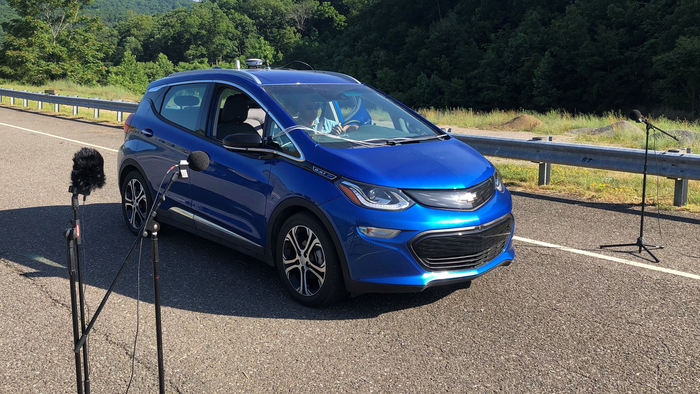Electric vehicles are so quiet and tend to reduce sound pollution. However, they can be of safety concern, especially for the visually impaired. To tackle this, many governments have commissioned the addition of artificial sounds to electric vehicles.
 In the United States, regulations require vehicle sounds to be detectable at certain distances for various speeds, and researchers have tested how well people detect electric vehicle sounds in terms of these requirements. Participants in the study were seated adjacent to a lane of the test facility and pressed a button upon hearing an approaching electric vehicle. Image Credit: Michael Roan and Luke Neurauter.
In the United States, regulations require vehicle sounds to be detectable at certain distances for various speeds, and researchers have tested how well people detect electric vehicle sounds in terms of these requirements. Participants in the study were seated adjacent to a lane of the test facility and pressed a button upon hearing an approaching electric vehicle. Image Credit: Michael Roan and Luke Neurauter.
Regulations in the United States need vehicle sounds to be detectable at certain distances for several vehicle speeds, where faster speeds correspond to higher detection distances. Michael Roan, from Penn State University, and Luke Neurauter, from the Virginia Tech Transportation Institute, and their colleagues investigated how well people can detect electric vehicle sounds relating to these needs.
Roan had a discussion on their methods and outcomes in the talk, titled “Electric Vehicle Additive Sounds: Detection results from an outdoor test for sixteen participants,” on Tuesday, November 30th, 2021. The presentation forms part of the 181st Meeting of the Acoustical Society of America, scheduled from November 29th to December 3rd.
Participants involved in the study were seated near a lane of the Virginia Tech Transportation Institute’s Smart Road facility. They pressed a button when they heard an approaching electric vehicle. This enabled the team to evaluate the chance of detection versus distance from the vehicle. This is a new criterion for assessing safety than the mean detection distance.
All of the cases had mean detection ranges that exceeded the National Highway Transportation Safety Administration minimum detection distances. However, there were cases where probability of detection, even at close ranges, never reached 100%. While the additive sounds greatly improve detection distances over the no sound condition, there are cases where pedestrians still missed detections.
Michael Roan, Penn State University
Despite adding sound, electric vehicles are essentially quieter compared to regular internal combustion engine vehicles. In urban surroundings, they would make less sound pollution.
According to Roan, more studies are required to analyze detection when all vehicles at an intersection are electric vehicles. Additive sounds could make a complicated interference pattern that may lead to some loud locations and other locations having very little sound.